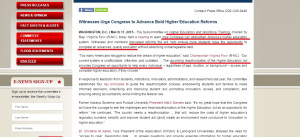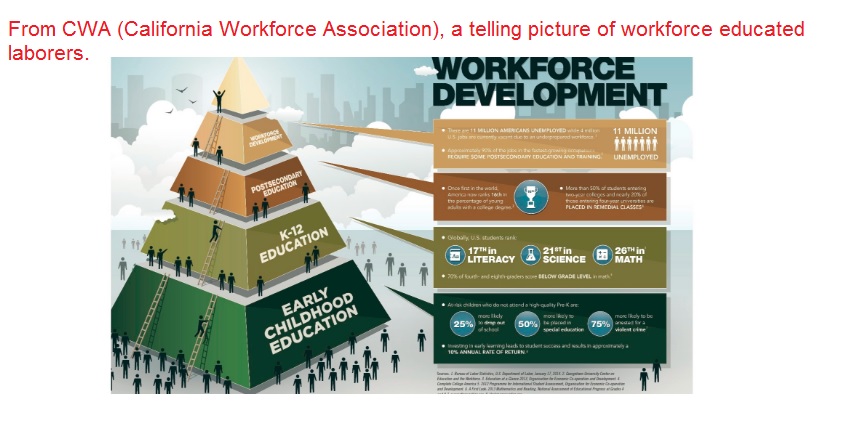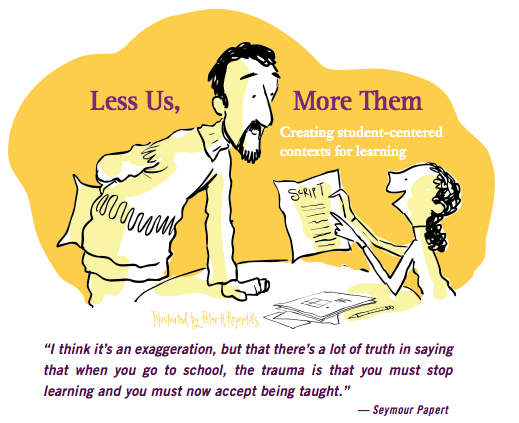
Common Core for the Workforce is present through Career Tech Education. This isn’t new news for those of us fighting the CCSS. However, were you aware that there’s a push to reauthorize the Higher Education Act? By doing so, you can bet CCSS via CTE will be there.
The Higher Ed Act:
Originally written in 1965, under Pres. Johnson domestic agenda for America called “The Great Society”. It was to increase amounts of federal aid universities and colleges received. The Act was to also increase student aid to get into institutions of higher education. It also established a national teacher corps program.
The HEA (as the Higher Education Act can be referred to) has been reauthorized several times. The updates to the law have been many and wide reaching. Much of what your students and mine fill out on their FASFA forms is tied up in this law.
Most notable in what I’ve been able to find in researching is the 1998 versrion known as “Gear Up” If reauthorized, this would be the 3rd time. As always, the CCSS is buried. Where would it be found? Perkins funding, those Titles funding programs, work study programs, apprenticeships, and probably more. We’ll get to the particulars in a bit. But first, what does “Gear Up” stand for? “Gaining Early Awareness and Readiness for Undergraduate Programs”. Remember, this was started in 1998. Before CCSS. But how ironic that we have so much ‘readiness’ rhetoric in modern education.
The 2008 Workforce/Education ‘Marriage’:
According to the Center for Law and Social Policy’s document highlighting the changes to HEA, here’s the one that joined education and businesses (think P3s, or public-private partnerships), “Creates Business Workforce Partnerships for Job Skill Training in High Growth Occupations or Industries. Colleges often lack the “venture capital” to start up new, credit-bearing programs that can respond to business workforce needs because state funding and federal financial aid typically only flow after students are enrolled in programs. This grant program funds partnerships of colleges, employers, and, where applicable, labor representatives to expand or create credit-bearing college programs responsive to business workforce needs, adapt college offerings to workers’ schedules, expand worksite learning opportunities, and purchase equipment related to such academic or job training programs. The grants are targeted toward programs serving nontraditional students, such as working adults, and can be used to create for-credit career pathways (Section 803).”
Other items which supported this ‘marriage’? TRIO and Bridges from Jobs to Careers. If you don’t know much about TRIO, here’s what the U.S. Dept. of Ed. has to say about it, “The history of TRIO is progressive. It began with Upward Bound, which emerged out of the Economic Opportunity Act of 1964 in response to the administration’s War on Poverty. In 1965, Talent Search, the second outreach program, was created as part of the Higher Education Act. In 1968, Student Support Services, which was originally known as Special Services for Disadvantaged Students, was authorized by the Higher Education Amendments and became the third in a series of educational opportunity programs. By the late 1960’s, the term “TRIO” was coined to describe these federal programs. If you don’t know much about Bridges from Jobs to Careers, it basically was a federal program which awarded competing higher education institutions grant money. There were mandatory requirements for use of the funding. In our current educational panaroma, each state appears to have some sort of bridge/work program. I didn’t find all 50 states in my general search, but I did find several states which are proudly open for business, so to speak.
To find out more about TRIO: http://www2.ed.gov/about/offices/list/ope/trio/index.html#references (*Note: at least one of the TRIO programs will begin its overreach as early as middle school)
To read the entire law from Congress back in the day, https://www.congress.gov/bill/110th-congress/house-bill/4067/text
To see CLASP’s information (including the key senators involved), http://www.clasp.org/resources-and-publications/publication-1/0430.pdf
A Jump Ahead to 2014:
While CLASP is still somewhat fresh on our minds, let’s see what more current ed/jobs efforts they’ve been up to.
Here’s a screen shot from their website that plainly has “Career Pathways” displayed. It also states ‘low income’ and ‘disadvantaged’. With some of the sweeping changes embedded in HR5, who is classified as ‘disadvantaged’ and ‘low income’ could drastically change to include almost every student!
You definitely will want to enlarge this screen shot.

There’s no question in my mind how much CLASP is tied into the Gates Foundation and is helping direct the policies of this nation. How utterly disgusting. If you want more information about them, see: http://www.clasp.org/issues/postsecondary Oh, and one more nugget of truth the WIOA (Workforce Investment and Opportunity Act) which has 21 embedded CCSS, CTE, and/or Career Pathways in it will take effect July 2015.
The 2015 Push:
If you’ve not already had to run away from your computer screaming after the bombshells from above, know that Washington is hard at work as we speak plotting even more reform. To this end, refer back to the opening screen shot you saw. It’s at the very top of the page. What I want you to find is the phrase about the 4 pillars of action to be taken in reauthorizing HEA. I’ll include the PDF file, but here’s a quick summary:
Point #1: empowering family decision making; Point #2: Simplifying and improving student aid; Point #3: promoting innovation, access, and completion (of what isn’t clarified upfront); and Point #4: insuring strong accountability and a limited federal role.
Drawbacks to the points include more data tracking/mining via the Integrated PostSecondary Education Data System (IPEDS); the federal agencies streamlining information families can access to cause less confusion; more robust financial literacy; having the U.S. Dept. of Ed create a higher education rating system; strengthening federal financial aid; streamlining student debt repayment plans to better serve taxpayers; making the Pell Grant flexible; possible federal interference in the ‘innovation, access, and completion’ point ( I strongly believe you should read and assimilate the information directly from the source); increasing the push for more digital learning; increasing the competency-based outcomes for students; more federal assistance for those with the lowest incomes; ramping up teaching preparedness via federal programs and/or influence; and, a possible move to make accreditation entities become more rigorous when it comes to post secondary education institutions. For all the details and for your research: hea_whitepaper
To learn more about IPEDS from the U.S. Dept. of Ed: http://nces.ed.gov/ipeds/about/
To learn more about the government entity overseeing all interested parties into post-secondary education and data collection, see: https://nces.ed.gov/npec/ (*Note: be sure to look at the Research/Development Board Members. Note which institutions or organizations they represent)
To learn more about the NCES (National Center for Education Statistics) which oversees all types of assessments (includes post secondary ones), see: http://nces.ed.gov/whatsnew/commissioner/index.asp
*Note: The NCES commissioner oversees all the assessments you see below and then some.

http://nces.ed.gov/about/
To access the National Post Secondary Education Policy Cooperative’s “Student Success” pdf (which includes public policy, alignment, and more), ewell_report
More You May Want to Know:
The original screen shot showed that an upcoming hearing would be taking place to discuss not only all I’ve shared with you, but even more. Involved in the hearing will be federal budget, plans, and workforce. You’ll want to listen to the entire thing. This hearing actually took place yesterday, March 18th. I can tell you from the opening remarks, at least one U.S. Congress member wasn’t a fan. Here’s a screen shot from Twitter taken from the Ed/Workforce feed:

[youtube https://www.youtube.com/watch?v=6kOf2UeClzg]
For Further Related Info:
Articles I’ve previously published on this subject include (not limited to)
11/16/14, CTE, labor unions, federal funding, and more: https://www.commoncorediva.com/2014/11/16/rmt-vp-unions-career-tech-and-common-core/
11/18/14, Gear Up, College and Career Ready Consortium, and more: https://www.commoncorediva.com/2014/11/18/ftf-tuesday-ccrec-college-and-career-readiness-evaluation-consortium/


Reblogged this on stopcommoncorenys.